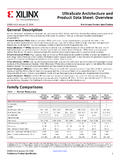Transcription of MIPI CSI-2 Receiver Subsystem v3 - Xilinx
1 MIPI CSI-2 Receiver Subsystem IP Product GuideVivado Design SuitePG232 April 4, 2018 MIPI CSI-2 RX Subsystem April 4, 2018 Table of ContentsIP FactsChapter1: OverviewSub-Core Details.. 6 Applications .. 11 Unsupported Features.. 12 Licensing and Ordering .. 12 Chapter2: Product SpecificationStandards .. 13 Resource Utilization.. 13 Port Descriptions .. 13 Register Space .. 17 Chapter3: Designing with the SubsystemGeneral Design Guidelines .. 28 Shared Logic .. 28I/O Planning .. 32 Clocking.. 34 Resets .. 35 Protocol Description .. 36 Chapter4: Design Flow StepsCustomizing and Generating the Subsystem .. 39 Constraining the Subsystem .. 48 Simulation .. 49 Synthesis and Implementation.
2 50 Chapter5: Application Example DesignApplication Example Design Overview.. 51 Setup Details .. 53 Implementing the Example Design.. 58 Send FeedbackMIPI CSI-2 RX Subsystem April 4, 2018 AppendixA: Verification, Compliance, and InteroperabilityHardware Validation .. 66 AppendixB: DebuggingFinding Help on .. 68 Debug Tools .. 69 Hardware Debug .. 70 Interface Debug .. 71 AppendixC: Additional Resources and Legal NoticesXilinx Resources.. 74 Documentation Navigator and Design Hubs .. 74 References .. 74 Revision History.. 76 Please Read: Important Legal Notices .. 77 Send FeedbackMIPI CSI-2 RX Subsystem April 4, 2018 Product SpecificationIntroductionThe Mobile Industry Processor Interface (MIPI) Camera Serial Interface ( CSI-2 ) RX Subsystem implements a CSI-2 receive interface according to the MIPI CSI-2 standard, [Ref 1].
3 The Subsystem captures images from MIPI CSI-2 camera sensors and outputs AXI4-Stream video data ready for image processing. The Subsystem allows fast selection of the top level parameters and automates most of the lower level parameterization. The AXI4-Stream video interface allows a seamless interface to other AXI4-Stream-based Support for 1 to 4 D-PHY lanes Line rates ranging from 80 to 1500 Mb/s Multiple Data Type support (RAW, RGB, YUV) AXI IIC support for Camera Control Interface (CCI) Filtering based on Virtual Channel Identifier Support for 1, 2 or 4 pixels per sample at the output as defined in the Xilinx AXI4-Stream Video IP and System Design Guide (UG934) [Ref 2] format AXI4-Lite interface for register access to configure different Subsystem options Dynamic selection of active lanes within the configured lanes during Subsystem generation.
4 Interrupt generation to indicate Subsystem status information Internal D-PHY allows direct connection to image sourcesIP FactsIP Facts TableSubsystem SpecificsSupported Device Family(1)UltraScale+ ,Zynq UltraScale+ MPSoC,Zynq -7000 All Programmable SoC,7 Series FPGAsSupported User InterfacesAXI4-Lite, AXI4-StreamResourcesPerformance and Resource Utilization web pageProvided with SubsystemDesign FilesEncrypted RTLE xample DesignVivado IP IntegratorTest BenchNot ProvidedConstraints FileXDCS imulation ModelNot ProvidedSupported S/W Driver(2)Standalone and LinuxTested Design Flows(3)Design EntryVivado Design SuiteSimulationFor supported simulators, see theXilinx Design Tools: Release Notes SynthesisSupportProvided by Xilinx at the Xilinx Support web pageNotes: 1.
5 For a complete list of supported devices, see the Vivado IP Standalone driver details can be found in the SDK directory (<install_directory>/SDK/<release>/data/embeddedsw/ ). Linux OS and driver support information is available from the Xilinx Wiki page. 3. For the supported versions of the tools, see theXilinx Design Tools: Release Notes FeedbackMIPI CSI-2 RX Subsystem April 4, 2018 Chapter1 OverviewThe MIPI CSI-2 RX Subsystem allows you to quickly create systems based on the MIPI protocol. It interfaces between MIPI-based image sensors and an image sensor pipe. An internal high speed physical layer design, D-PHY, is provided that allows direct connection to image sources.
6 The top level customization parameters select the required hardware blocks needed to build the Subsystem . Figure 1-1 shows the Subsystem Subsystem consists of the following sub-cores: MIPI D-PHY MIPI CSI-2 RX Controller AXI Crossbar Video Format Bridge AXI IICX-Ref Target - Figure 1-1 Figure 1-1: Subsystem ArchitectureAXI CrossbarAXI IICV ideoFormatBridgeMIPI CSI-2 RXControllerMIPI D-PHYV ideo Interface(AXI4-Stream)Embedded Non-ImageInterface (AXI4-Stream)csirxss_csi_irqcsirxss_iic_ irqSerial InterfaceAXI4-Lite InterfaceIIC InterfacePPIdphy_clk_200 Mlite_aclklite_aresetnvideo_aclkvideo_ar esetnSend FeedbackMIPI CSI-2 RX Subsystem April 4, 2018 Chapter 1:OverviewSub-Core DetailsMIPI D-PHY The MIPI D-PHY IP core implements a D-PHY RX interface and provides PHY protocol layer support compatible with the CSI-2 RX interface.
7 See the MIPI D-PHY LogiCORE IP Product Guide (PG202) [Ref 3] for details. MIPI D-PHY implementation differs for the UltraScale+ devices and the 7 Series devices with respect to UltraScale+ devices, the Vivado IDE provides a Pin Assignment Tab to select the required I/O. However, for the 7 series devices the clock capable I/O should be selected manually. In addition, the 7 series devices do not have a native MIPI IOB support. You will have to target either HR bank I/O or HP bank I/O for the MIPI IP implementation. For more information on MIPI IOB compliant solution and guidance, refer D-PHY Solutions (XAPP894) [Ref 15].MIPI CSI-2 RX Controller The MIPI CSI-2 RX Controller core consists of multiple layers defined in the MIPI CSI-2 RX specification, such as the lane management layer, low level protocol and byte to pixel conversion.
8 The MIPI CSI-2 RX Controller core receives 8-bit data per lane, with support for up to 4 lanes, from the MIPI D-PHY core through the PPI. As shown in Figure 1-1 the byte data received on the PPI is then processed by the low level protocol module to extract the real image information. The final extracted image is made available to the user/processor interface using the AXI4-Stream protocol. The lane management block always operates on 32-bit data received from PPI irrespective number of Target - Figure 1-2 Figure 1-2:MIPI CSI-2 RX Controller CorePHY Protocol Interface(PPI)Lane ManagementControlFSMPHECCP rocessingDataProcessingCRCC heckerBufferAXI4-StreamRegisterInterface AXI4-StreamPPIAXI4-LiteInterruptX16317-0 31116 Send FeedbackMIPI CSI-2 RX Subsystem April 4, 2018 Chapter 1:OverviewFeatures of this core include.
9 1 4 lane support, with register support to select active lanes (the actual number of available lanes to be used) Short and long packets with all word count values supported Primary and many secondary video formats supported Data Type (DT) interleaving Virtual Channel Identifier (VC) interleaving Combination of Data Type and VC interleaving Multi-lane interoperability Error Correction Code (ECC) for 1-bit error correction and 2-bit error detection in packet header CRC check for payload data Long packet ECC/CRC forwarding capability for downstream IPs Maximum data rate of Gb/s Pixel byte packing based on data format AXI4-Lite interface to access core registers Low power state detection Error detection (D-PHY Level Errors, Packet Level Errors, Protocol Decoding Level Errors) AXI4-Stream interface with 32/64-bit TDATA width support to offload pixel information externally Interrupt support for indicating internal status/error informationAs shown in Table 1-1 the embedded non-image (with data type code 0x12)
10 AXI4-Stream interface data width is selected based on the Data Type 1-1:Embedded Non-Image AXI4-Stream Interface TDATA WidthsData Type (DT) AXI4-Stream Interface TDATA WidthRAW632 RAW732 RAW832 RAW1064 RAW1264 RAW1464 All RGB 64 YUV 422 8bit64 Send FeedbackMIPI CSI-2 RX Subsystem April 4, 2018 Chapter 1:OverviewAbrupt termination events such as a soft reset, disabling a core while a packet is being written to the line buffer, or a line buffer full condition results in early termination. The termination is implemented by assertion of EOL on the video interface or TLAST and TUSER[1] on the embedded non-image interface, based on the current long packet being ForwardingSideband signals of AXI4-Stream interface [Include/Exclude Video Format Bridge and Embedded non-image interface] report ECC and CRC data received from the source [sensor] to downstream IPs.


















